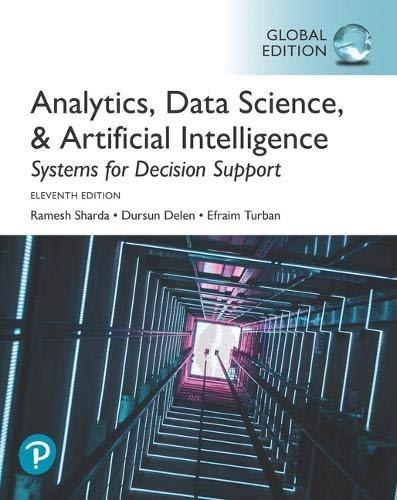Predicting the outcome of a college football game (or any sports game, for that matter) is an
Question:
Predicting the outcome of a college football game (or any sports game, for that matter) is an interesting and challenging problem. Therefore, challenge-seeking researchers from both academics and industry have spent a great deal of effort on forecasting the outcome of sporting events. Large amounts of historic data exist in different media outlets (often publicly available) regarding the structure and outcomes of sporting events in the form of a variety of numerically or symbolically represented factors that are assumed to contribute to those outcomes.
The end-of-season bowl games are very important to colleges in terms of both finance (bringing in millions of dollars of additional revenue) and reputation-for recruiting quality students and highly regarded high school athletes for their athletic programs (Freeman & Brewer, 2016). Teams that are selected to compete in a given bowl game split a purse, the size of which depends on the specific bowl (some bowls are more prestigious and have higher payouts for the two teams), and therefore securing an invitation to a bowl game is the main goal of any division I-A college football program. The decision makers of the bowl games are given the authority to select and invite bowl-eligible (a team that has six wins against its Division I-A opponents in that season) successful teams (as per the ratings and rankings) that will play in an exciting and competitive game, attract fans of both schools, and keep the remaining fans tuned in via a variety of media outlets for advertising.
In a recent data mining study, Delen et al.
(2012) used eight years of bowl game data along with three popular data mining techniques (decision trees, neural networks, and support vector machines) to predict both the classification-type outcome of a game (win versus loss) and the regression-type outcome (projected point difference between the scores of the two opponents). What follows is a shorthand description of their study.
The Methodology In this research, Delen and his colleagues followed a popular data mining methodology, CRISP-DM (Cross-Industry Standard Process for Data Mining), which is a six-step process. This popular methodology, which is covered in detail in Chapter 4, provided them with a systematic and structured way to conduct the underlying data mining study and hence improved the likelihood of obtaining accurate and reliable results. To objectively assess the prediction power of the different model types, they used a cross-validation methodology k-fold crossvalidation.
Details on k-fold cross-validation can be found in graphically illustrates the methodology employed by the researchers.
Questions for Case
1. What are the foreseeable challenges in predicting sporting event outcomes (e.g., college bowl games)?
2. How did the researchers formulate/design the prediction problem (i.e., what were the inputs and output, and what was the representation of a single sample—row of data)?
3. How successful were the prediction results? What else can they do to improve the accuracy?
Step by Step Answer:

Analytics Data Science And Artificial Intelligence Systems For Decision Support
ISBN: 9781292341552
11th Global Edition
Authors: Ramesh Sharda, Dursun Delen, Efraim Turban





